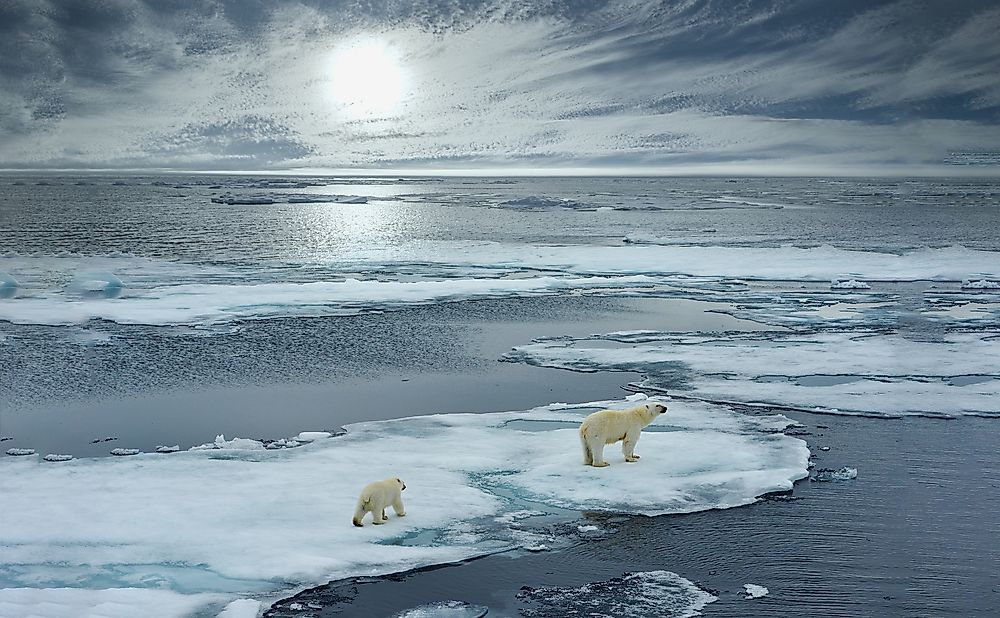What Is the Smallest Ocean?

The Arctic Ocean is the world's smallest ocean measuring in at only 5 million square miles. It is also the shallowest among the five major oceans on our planet. Part of the Arctic Ocean is covered by sea ice throughout the year and almost entirely in winter.
Geography of the Arctic Ocean
The Arctic Ocean is located almost entirely in the geographic North Pole at the center of the northern hemisphere. The arctic is spread over an area of 5 million square miles with a coastline of about 28,200 miles. It is surrounded by land masses of Europe, Asia, North America, Greenland, and several other Arctic islands. The Arctic Ocean joins the Pacific Ocean through the Bering Strait. The Arctic’s connection to the Atlantic Ocean is through Greenland Sea and Labrador Sea. Russia, Norway, Iceland, Greenland, Canada, and the United States border the Arctic Ocean all having ports and harbors along the coastline.
The Arctic Ocean arctic shelves include the Russian continental shelf and the Canadian Arctic shelf among other shelves. The Russian continental shelf is the largest and is made of three smaller shelves; Siberian Shelf, Chukchi Sea Shelf and the Barents Shelf.
The North Polar Basin is divided underwater into two basins, the Eurasian Basin and the Amerasian Basin, by the Lomonosov Ridge. The mean depth of the Arctic Ocean approximately, 3,400 feet with the deepest point being the Litke Deep in the Eurasian Basin with a depth of 17,880 feet.
Climate, Animals and Plant Life of the Arctic Ocean
The Arctic Ocean is enclosed in a polar climate. Winters are extremely cold with polar nights while summers are characterized with midnight sun. Cyclones are frequent during summer and may result in rain and snow. On the surface of the Arctic Ocean, the temperatures are fairly constant at about -1.8 °C.
Animals found in the Arctic Ocean include fish, seals walruses, whales, Lion's mane jellyfish, and the banded gunnel. Little plant life is present except for the phytoplankton. The natural resources of the Arctic Ocean include petroleum, natural gas, placers, manganese nodules, and aggregates of sand and gravel.
Environmental Concerns
Over the years, the arctic ice has been thinning. The thinning leads to a fall in the earth’s mean albedo possibly resulting in global warming. It is feared that by 2040, the arctic may be free of ice for the first time in history. A rise in temperatures in the arctic could cause huge amounts of melt water to get into the North Atlantic leading to a disruption of the ocean currents. These disruptions may cause severe changes of weather on the planet.
Arctic ice serves to stabilize methane deposits near the shoreline. With the continuous thinning of the arctic ice, it is feared that Clathrate, a chemical substance made up of a lattice which traps and contains the gas, will be broken down causing release of methane into the atmosphere. Large amounts of methane in the atmosphere are dangerous are they could cause further warming making marine life to become extinct.











